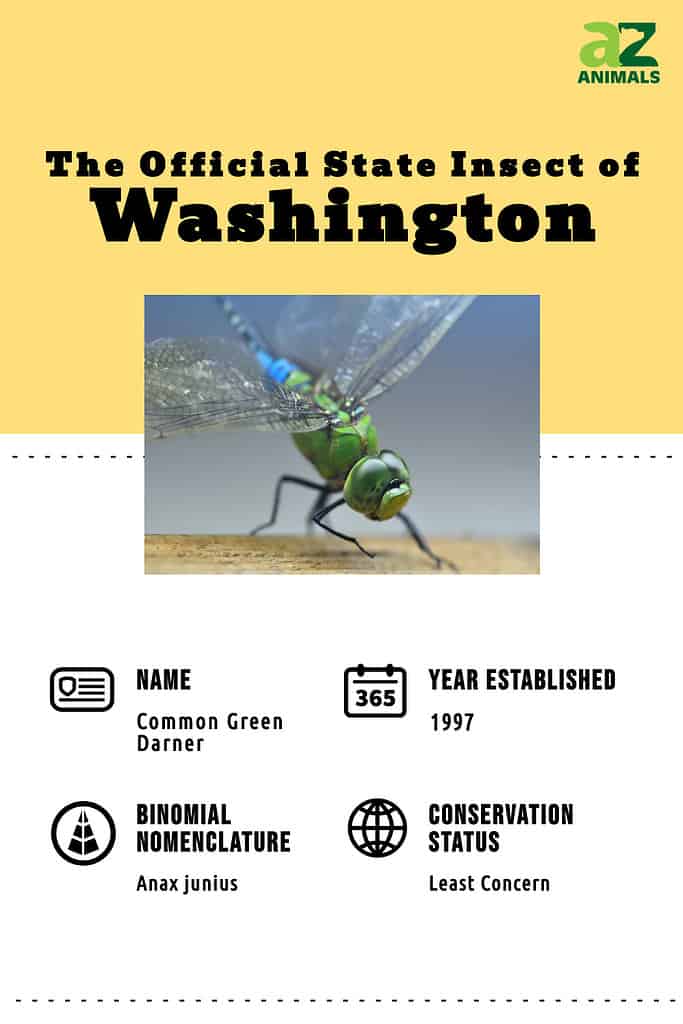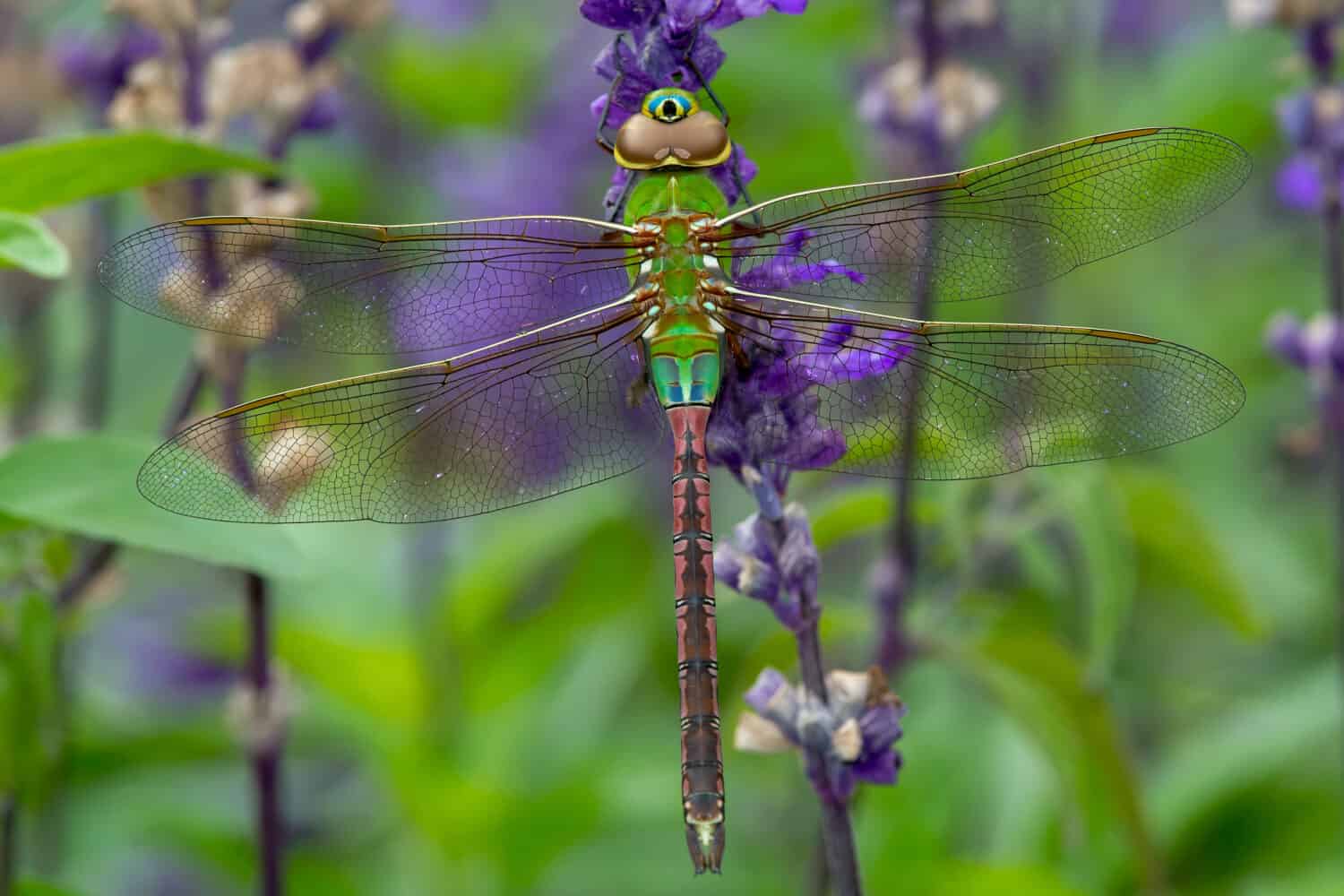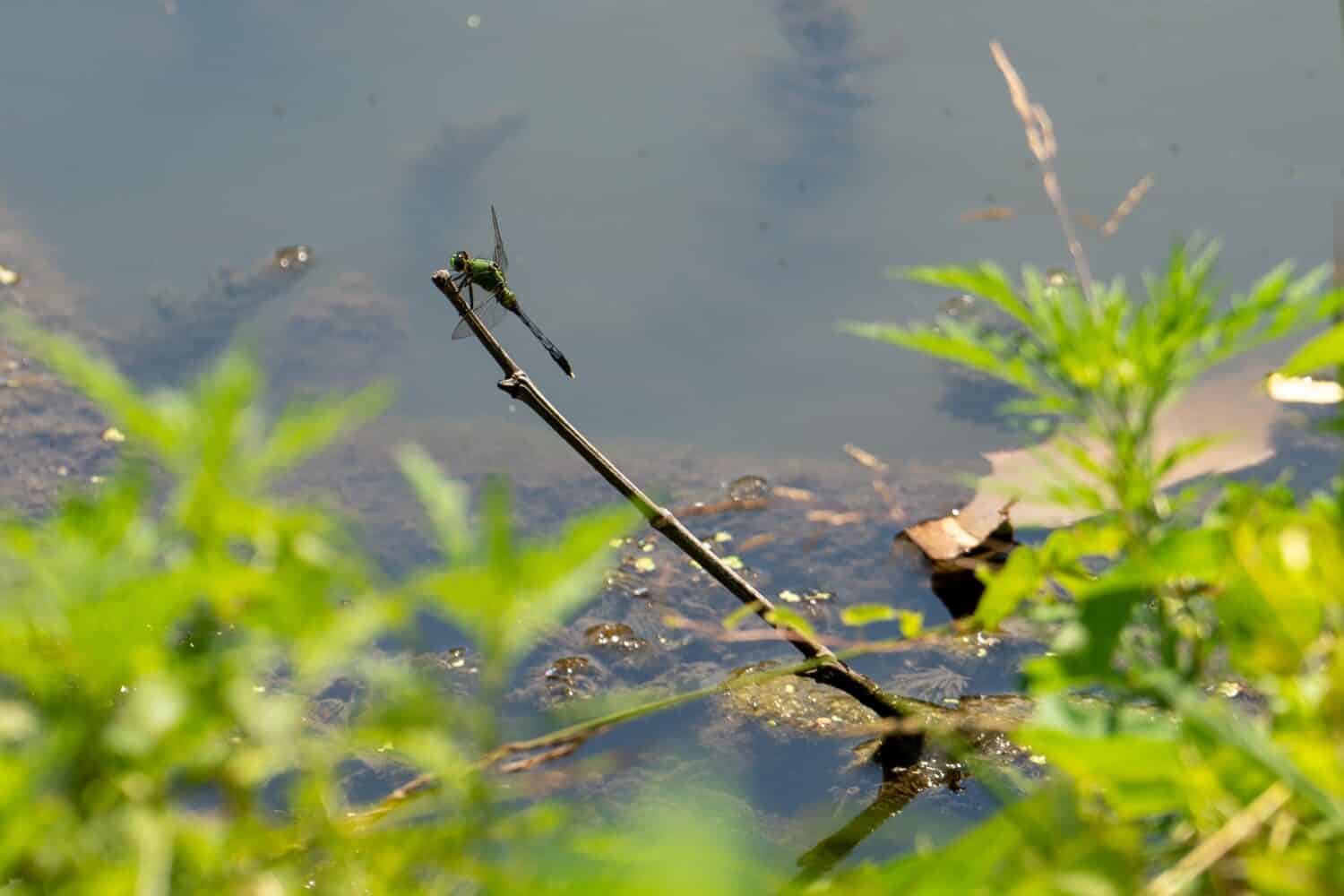How did Washington choose their state insect? With the help of students at Crestwood Elementary School in Kent when they brought their proposal to the state legislature. Then, students in more than 100 school districts chose the green darner dragonfly as the official Washington state insect. Washington designated the green darner dragonfly as the state’s insect in 1997.
What an easy choice! You can find them throughout Washington, it’s easily recognizable, and they are essential to the ecosystem. So what is the common green darner dragonfly? Let’s find out!

What Is a Green Darner Dragonfly?
The green darner dragonfly (Anax junius) is also known as the common green darner dragonfly and “darning needle” because it resembles a darning needle or “mosquito hawk.” These impressive dragonflies can fly around 75 miles each day and 38 miles when migrating at 25-35 mph. Their wings are beautifully synchronized as they fly in a straight line.
The green darner dragonfly is famous for their bright green, slender body, and thick thorax. The adult abdomens are around 3 inches long and have a 3-4 inch wingspan. Young and female dragonfly’s colors can vary, such as between a pale green or orange-brown abdomen. Green darner dragonflies have clear wings with a tint of amber when they age.

The common green darner has a long, cylindrical body and long legs.
©Paul Reeves Photography/Shutterstock.com
Behavior
Green darner dragonfly larvae hatch into nymphs. These nymphs are predators that spend most of their life underwater. Later, they will undergo metamorphosis, becoming winged adults living above water. Their wings are powerful and function independently, allowing them to fly in any direction and hover in the air.
If you see these dragonflies swimming erratically in many directions, they are hunting or feeding. However, if you see green darner dragonflies flying in the same direction, they are most likely migrating. While it’s unsure where migration ends, they travel south in large groups along water sources. They only survive a few weeks to a month, so it takes around three generations of dragonflies to complete the migration.
Prey and Predators
Green darner dragonflies are excellent predators. These amazing aerial hunters will fly at high speeds and use their exceptional eyesight to catch their prey. Then, they use their jaws to tear and chew their prey.
They feed on problematic insects, making them essential for the ecosystem. Some of their diets include:
- Flies
- Gnats
- Moths
- Mosquitoes
- Mayflies.
While the green darner dragonfly is a predator, they are still a small insect susceptible to other predators, such as:
- Spiders
- Frogs
- Small birds
- Lizards
- Fish.

You can find the common green darner over still bodies of water, such as ponds, wetlands, and slow-moving streams.
©Brooke Bowdren/Shutterstock.com
Where Can You Find the Green Darner Dragonfly?
Green darner dragonflies hover over ponds, wetlands, and slow streams across the United States, Mexico, and southern Canada. In addition, you may find smaller populations throughout Hawaii. Females will lay their eggs on the foliage around and below the surface of a body of water. The nymphs are aquatic carnivores that lack wings and feed on tadpoles and small fish until they become adults.
At the moment, they are listed as Least Concern by the IUCN. However, should wetlands become threatened, green darner habitats will get impacted.
The photo featured at the top of this post is © Paul Reeves Photography/Shutterstock.com
Thank you for reading! Have some feedback for us? Contact the AZ Animals editorial team.






